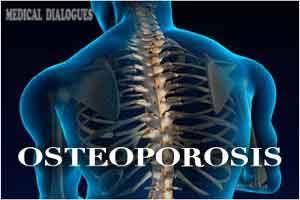- Home
- Editorial
- News
- Practice Guidelines
- Anesthesiology Guidelines
- Cancer Guidelines
- Cardiac Sciences Guidelines
- Critical Care Guidelines
- Dentistry Guidelines
- Dermatology Guidelines
- Diabetes and Endo Guidelines
- Diagnostics Guidelines
- ENT Guidelines
- Featured Practice Guidelines
- Gastroenterology Guidelines
- Geriatrics Guidelines
- Medicine Guidelines
- Nephrology Guidelines
- Neurosciences Guidelines
- Obs and Gynae Guidelines
- Ophthalmology Guidelines
- Orthopaedics Guidelines
- Paediatrics Guidelines
- Psychiatry Guidelines
- Pulmonology Guidelines
- Radiology Guidelines
- Surgery Guidelines
- Urology Guidelines
UK Guideline for prevention and treatment of osteoporosis

UK National Osteoporosis Guideline Group (NOGG) came up with an updated guideline on the prevention and treatment of osteoporosis with an objective to review the assessment and management of osteoporosis and the prevention of fragility fractures in postmenopausal women and men age 50 years or over. The guidelines appear in the journal Archives of Osteoporosis. It updates guidelines previously developed by the Royal College of Physicians and the National Osteoporosis Guideline Group.
Key Recommendations include:
Assessment of fracture risk
- Fracture probability should be assessed in postmenopausal women, and men age 50 years or more, who have risk factors for fracture, using FRAX. In individuals at intermediate risk, bone mineral density (BMD) measurement should be performed using dual-energy X-ray absorptiometry and fracture probability re-estimated using FRAX.
- Vertebral fracture assessment should be considered in postmenopausal women and men age > 50 years if there is a history of ≥4 cm height loss, kyphosis, recent or current long-term oral glucocorticoid therapy, or a BMD T-score ≤ −2.5.
- A daily calcium intake of between 700 and 1200 mg should be advised, if possible achieved through dietary intake, with use of supplements if necessary.
- In postmenopausal women and older men (≥50 years) at increased risk of fracture a daily dose of 800 IU cholecalciferol should be advised.
- In postmenopausal women and older men receiving bone-protective therapy for osteoporosis, calcium supplementation should be given if the dietary intake is below 700 mg/day, and vitamin D supplementation considered in those at risk of or with evidence of vitamin D insufficiency.
- Regular weight-bearing exercise should be advised, tailored according to the needs and abilities of the individual patient.
- Falls history should be obtained in individuals at increased risk of fracture and further assessment and appropriate measures undertaken in those at risk.
- Alendronate or risedronate are first line treatments in the majority of cases. In women who are intolerant of oral bisphosphonates or in whom they are contraindicated, intravenous bisphosphonates or denosumab provide the most appropriate alternatives, with raloxifene or hormone replacement therapy as additional options. The high cost of teriparatide restricts its use to those at very high risk, particularly for vertebral fractures.
- Treatment review should be performed after 3 years of zoledronic acid therapy and 5 years of oral bisphosphonate treatment. Continuation of bisphosphonate treatment beyond 3–5 years can generally be recommended in individuals age ≥75 years, those with a history of hip or vertebral fracture, those who sustain a fracture while on treatment, and those taking oral glucocorticoids.
- If treatment is discontinued, fracture risk should be reassessed after a new fracture, regardless of when this occurs. If no new fracture occurs, assessment of fracture risk should be performed again after 18 months to 3 years.
- There is no evidence to guide decisions beyond 10 years of treatment and management options in such patients should be considered on an individual basis.
- Women and men age ≥70 years, with a previous fragility fracture, or taking high doses of glucocorticoids (≥7.5 mg/day prednisolone) should be considered for bone-protective therapy.
- In other individuals, fracture probability should be estimated using FRAX with adjustment for glucocorticoid dose.
- Bone-protective treatment should be started at the onset of glucocorticoid therapy in individuals at high risk of fracture.
- Alendronate and risedronate are first line treatment options. Where these are contraindicated or not tolerated, zoledronic acid or teriparatide are alternative options.
- Bone-protective therapy may be appropriate in some premenopausal women and younger men, particularly in individuals with a previous history of fracture or receiving high doses of glucocorticoids.
- Alendronate and risedronate are first-line treatments in men. Where these are contraindicated or not tolerated, zoledronic acid or denosumab provide the most appropriate alternatives, with teriparatide as an additional option.
- For estimation of fracture probability, femoral neck BMD T-scores in men should be based on the NHANES female reference database. When using the online version of FRAX for the estimation of fracture probability, femoral neck BMD values (g/cm2) should be entered and the manufacturer of the densitometer specified.
Intervention thresholds for pharmacological intervention
- The thresholds recommended for decision making are based on probabilities of major osteoporotic and hip fracture derived from FRAX and can be similarly applied to men and women.
- Women with a prior fragility fracture can be considered for treatment without the need for further assessment, although BMD measurement may be appropriate, particularly in younger postmenopausal women.
- Age-dependent intervention thresholds up to 70 years and fixed thresholds thereafter provide clinically appropriate and equitable access to treatment.
Commissioners of healthcare should recognize that fractures due to osteoporosis are a significant and growing public health issue, and ensure that they are dealt with explicitly in their local healthcare programme.The guidelines have received accreditation from the National Institute of Health and Care Excellence (NICE) and provide a comprehensive overview of the assessment and management of osteoporosis for all healthcare professionals who are involved in its management.
For more reference log on to https://link.springer.com/article/10.1007/s11657-017-0324-5

Disclaimer: This site is primarily intended for healthcare professionals. Any content/information on this website does not replace the advice of medical and/or health professionals and should not be construed as medical/diagnostic advice/endorsement or prescription. Use of this site is subject to our terms of use, privacy policy, advertisement policy. © 2020 Minerva Medical Treatment Pvt Ltd